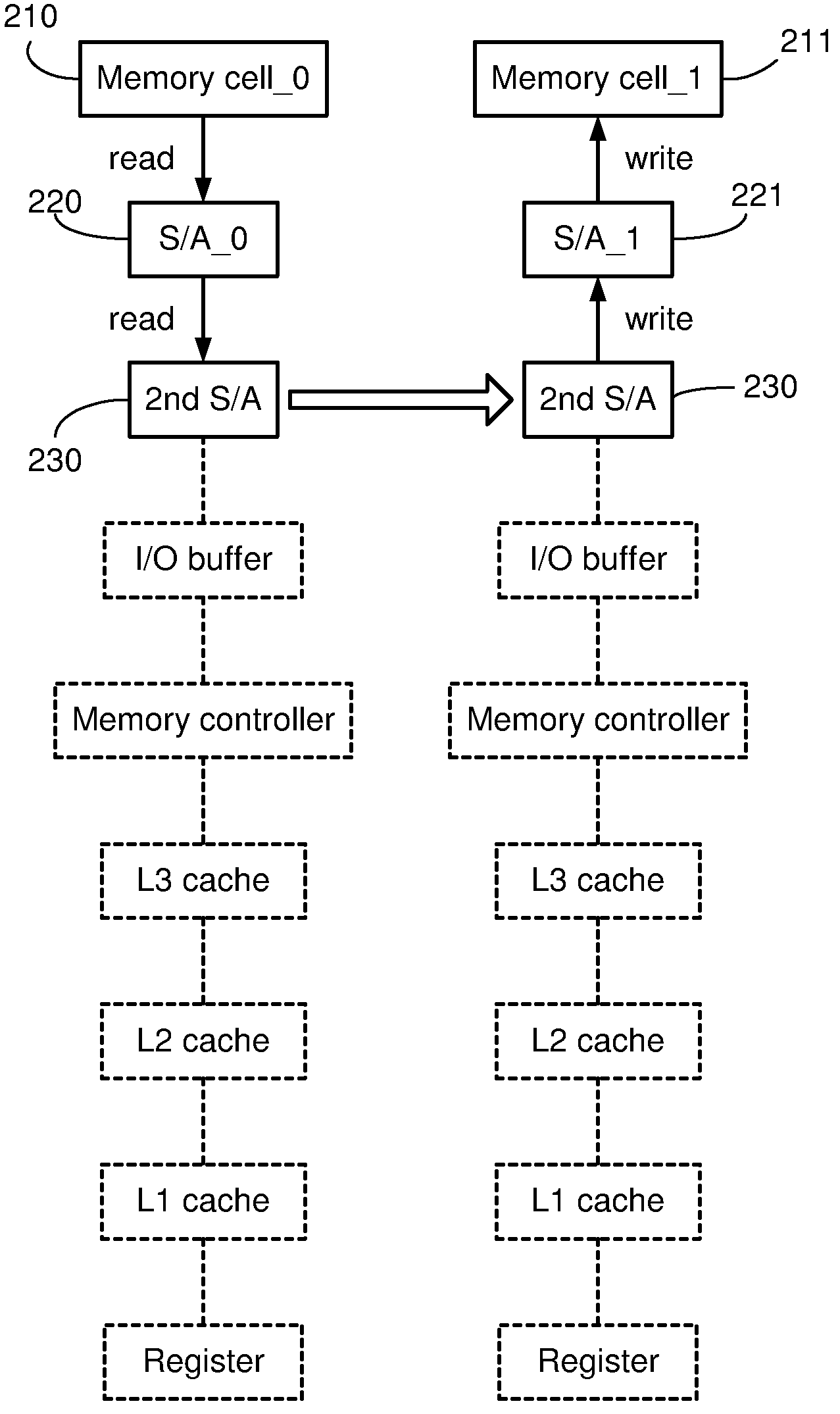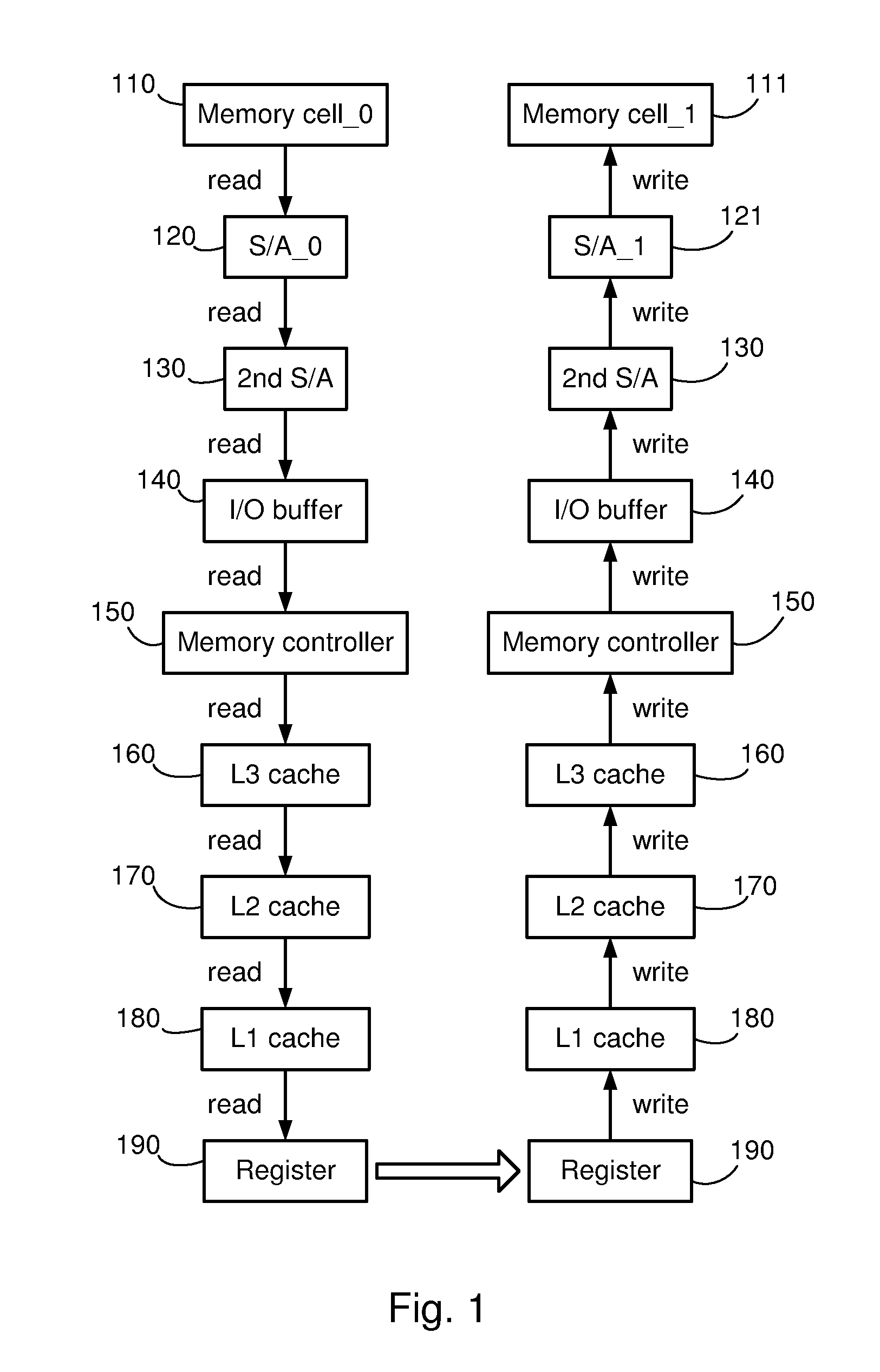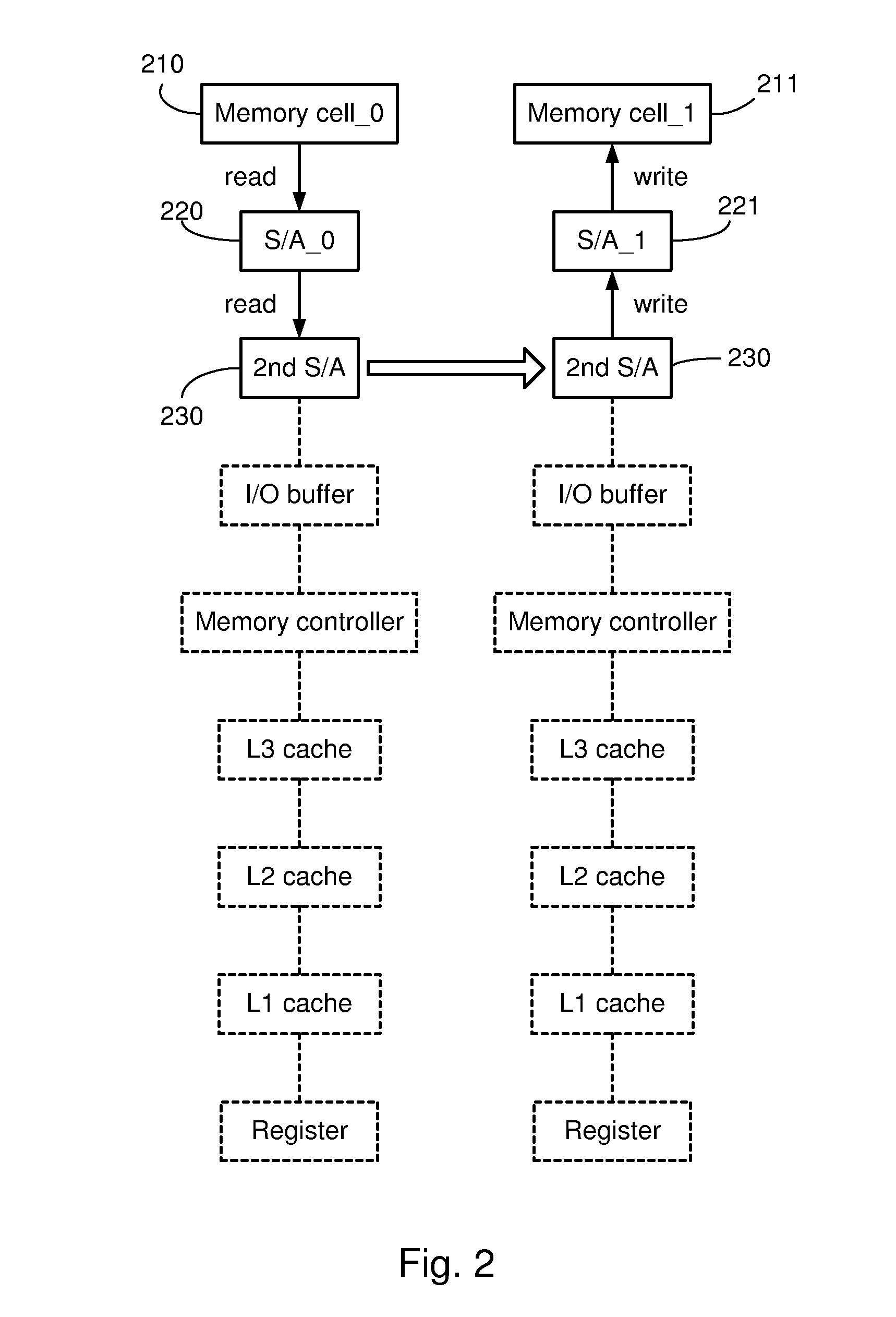Systems and methods for data transfers between memory cells
a technology of memory cells and data transfers, applied in the field of memory systems, can solve the problems of system operation, data latency in the memory is increasingly becoming a problem, and the use of older technology is rapidly becoming less useful and even obsolete, so as to reduce the latency of data transfers and the additional latency associated with the effect of latency
- Summary
- Abstract
- Description
- Claims
- Application Information
AI Technical Summary
Benefits of technology
Problems solved by technology
Method used
Image
Examples
Embodiment Construction
[0027]One or more embodiments of the invention are described below. It should be noted that these and any other embodiments described below are exemplary and are intended to be illustrative of the invention rather than limiting.
[0028]Broadly speaking, the invention includes systems and methods for reducing the latency of data transfers between memory cells by enabling data to be transferred directly between sense amplifiers in the memory system. In one embodiment, a memory system uses a conventional DRAM memory structure, but rather than transferring data from a memory cell through this structure to a processor register, and then back through the memory structure to a second memory cell, the data path is short-circuited through the sense amplifiers that are coupled to the memory cells. By avoiding the routing of the data path through the additional memory structure components (e.g., I / O buffers, memory controllers, cache memories, processor registers,) the additional latency associa...
PUM
 Login to View More
Login to View More Abstract
Description
Claims
Application Information
 Login to View More
Login to View More - R&D
- Intellectual Property
- Life Sciences
- Materials
- Tech Scout
- Unparalleled Data Quality
- Higher Quality Content
- 60% Fewer Hallucinations
Browse by: Latest US Patents, China's latest patents, Technical Efficacy Thesaurus, Application Domain, Technology Topic, Popular Technical Reports.
© 2025 PatSnap. All rights reserved.Legal|Privacy policy|Modern Slavery Act Transparency Statement|Sitemap|About US| Contact US: help@patsnap.com



